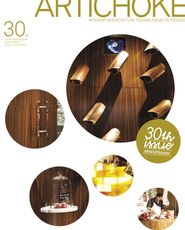Once considered the preserve of the travelling salesman, eating out alone is now commonplace. In fact, for committed foodies, solitary dining is a pleasure. This shift in dining practice brings with it a number of issues for the designer. Arguably, we need to create an entirely new design language, or set of rules, for those who seek the luxury of loneliness within spaces traditionally contextualized by a grouping of at least “plus one.”
So how to make a place for one in a space designed for many? How can the restaurant invite the singleton to be a lone diner and what tools can we draw on to improve or encourage this activity? As designers, when we commence a hospitality project we first develop the thematic design direction and then resolve the planning. It is at this point we consider the patron in more depth.
The tools are simple. The benefits of the lone dining experience are the opportunity for one to hear without being heard and observe without being observed. Add a collection of comforts such as a menu with some good reading material attached or the opportunity to sit facing an open kitchen for additional theatre, and you are well on the way to creating a space for the lone diner. Other things to consider are lighting, clusters of furniture, screens, banquette seating and mirrors.
Furthermore, how can we make you feel comfortable if you are the lone diner by default, such as the first person to arrive in a group? At Bistro Guillaume, for example, we created a designated area for pre-dinner drinks to avoid the experience of being the forlorn, unaccompanied guest. And just as much thought must be placed on how to comfort the last diner in the restaurant, which can be as simple as keeping the lights dimmed to avoid putting stragglers in a fluorescent fury.
The designer and the restaurateur both find the convention of maximizing the seating capacity of a space can be at odds with the concept of allowing the best seat in the house to be enjoyed by just one. Contrary to popular belief, communal tables don’t rid lone diners of the guilty feeling of taking up an entire table - they are more often perceived as enforced socialization. The website Solo Dining (www.solodining.com) discusses enterprising new restaurants that have installed television screens and headphones on single tables. Hecker Phelan & Guthrie are yet to embrace this practice - I feel a better approach is summed up in the words of Ilse Crawford, who suggests that “Creating a warm welcoming space is a little like creating great music. You can have the right sounds in the right order but there has to be something else, something special to move people, to make them feel good.”
I always say that the best number for a dinner party is two: me and a damn good waiter. With that in mind, it’s time to harness this fast growing segment of the market where the best seat in the house trumps the communal table every time. A bit of kind attention to the lone diner will pay off - as you know, food critics frequently dine alone.















